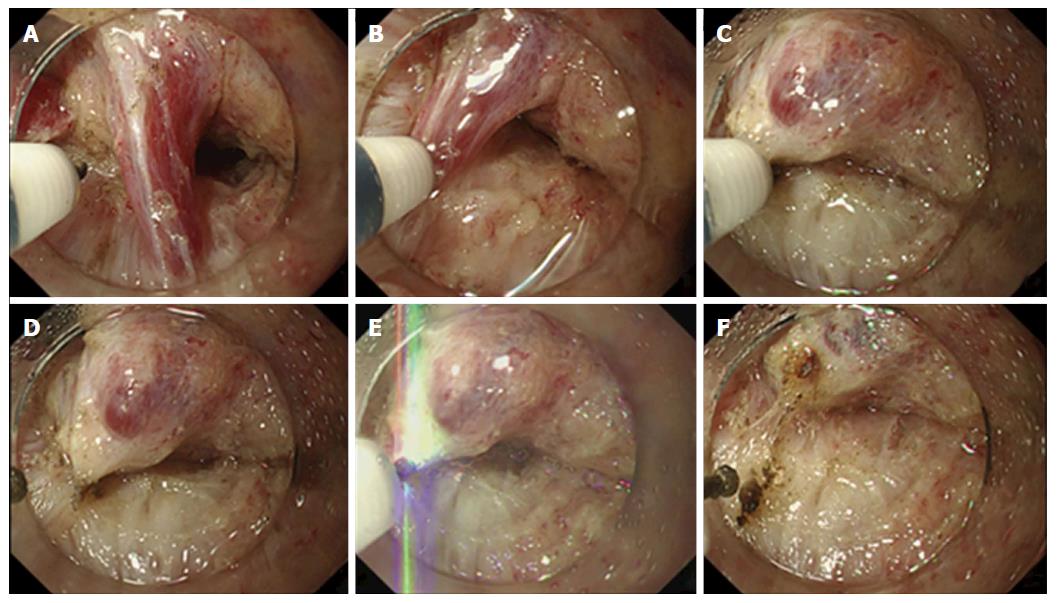Copyright
©The Author(s) 2017.
World J Gastroenterol. Aug 7, 2017; 23(29): 5422-5430
Published online Aug 7, 2017. doi: 10.3748/wjg.v23.i29.5422
Published online Aug 7, 2017. doi: 10.3748/wjg.v23.i29.5422
Figure 1 Process of the vessel-sealing with endoknife compression technique.
A: The vessel penetrating between the muscularis propria is exposed; B-D: The vessel is compressed by the FlushKnife-BT 2.5 mm and coagulated using the S method or F method until the color turned white, which indicates a complete desiccation of the vessel. If it does not turn white completely, we tried this method from the other side; E and F: Finally, the vessel is cut with the FlushKnife-BT 2.5 mm using the forced coagulation mode (Effect 3, 50 W).
- Citation: Ishida T, Toyonaga T, Ohara Y, Nakashige T, Kitamura Y, Ariyoshi R, Takihara H, Baba S, Yoshizaki T, Kawara F, Tanaka S, Morita Y, Umegaki E, Hoshi N, Azuma T. Efficacy of forced coagulation with low high-frequency power setting during endoscopic submucosal dissection. World J Gastroenterol 2017; 23(29): 5422-5430
- URL: https://www.wjgnet.com/1007-9327/full/v23/i29/5422.htm
- DOI: https://dx.doi.org/10.3748/wjg.v23.i29.5422









